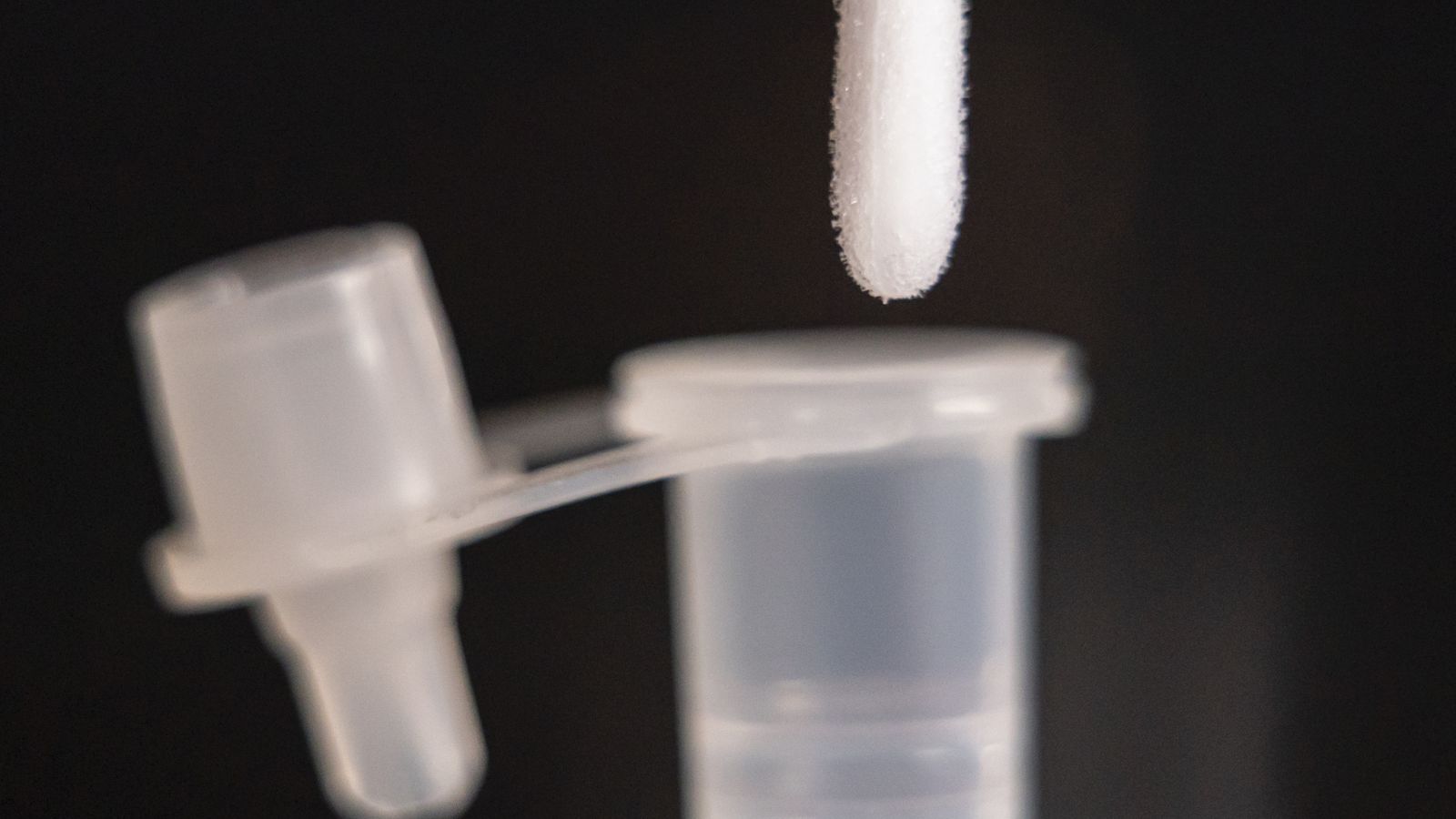Routine COVID testing for care home residents and staff in England who have symptoms of the disease is to end on Friday.
The changes from Saturday 1 April come more than a year after the nation began the transition to living with coronavirus.
Testing is being further aligned with how other common respiratory infections are managed due to the vaccination programme’s success, more therapeutic treatment access and high immunity levels in the population, said government scientists.
However, earlier this month the final official estimate of the prevalence of the virus revealed infections in England had climbed to their highest level since the beginning of the year.
While the trend was uncertain in Scotland, Wales and Northern Ireland, there were signs the virus was continuing to spread.
Under the new plans, all PCR testing outside NHS settings will end in England.
The routine testing in care homes currently consists of two lateral flow device (LFD) tests taken 48 hours apart.
COVID or flu? Ultra-thin sensor ‘can detect both within 10 seconds’, say scientists
Partygate inquiry: Sir Patrick Vallance takes aim at Boris Johnson as he says COVID rules were ‘for everybody’
COVID-19 infections in England at highest level since start of year, final estimates reveal
LFD tests will continue for people in the community and residents in care or other high-risk settings if they have symptoms of the virus and are eligible for COVID treatment.
There will also still be LFD testing for some NHS staff with symptoms working on inpatient wards with severely immunosuppressed patients, staff with symptoms who work in hospices, and all patients being discharged from hospitals into care settings.
Please use Chrome browser for a more accessible video player
However, routine asymptomatic testing, including testing on admission, for staff and patients will end on Friday across all health and social care settings, including hospitals and care homes. The majority of this has been paused since last August.
Read more:
Ultra-thin sensor ‘can detect both flu and COVID within 10 seconds’
Infections at highest level since start of year, final estimates reveal
Chinese COVID data from animal market gives clues on origins of virus
Please use Chrome browser for a more accessible video player
The UK Health Security Agency (UKHSA) said the aim was to “ensure testing continues to focus on those at highest risk, enables appropriate clinical treatment and supports the management of outbreaks in high-risk settings including health and social care”.
‘COVID hasn’t gone away’
Dr Dame Jenny Harries, the UKHSA’s chief executive, said: “Fewer people now experience severe illness due to COVID-19 due to vaccinations, infection-related immunity and treatments for those who need them and the risk of hospitalisation has decreased overall.
“This means we are now able to further bring our testing programmes in line with management of other viral infections whilst still maintaining focus on those at highest risk to protect them from the virus.
“COVID-19 and other respiratory illnesses haven’t gone away and simple actions, like washing your hands and staying at home and avoiding vulnerable people when unwell, can make a big difference. For those at highest risk of severe illness, the spring booster programme also provides an opportunity to keep immunity topped up.”






